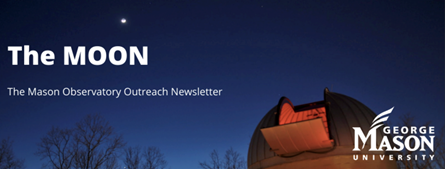NASA Goddard’s Dr. James Klimchuk will explore why he outer atmosphere of the Sun – called the corona – is roughly 1000 times hotter than the underlying solar surface. The same is true of other stars. Solving the famous “coronal heating problem” has been one of the great challenges in astrophysics. It is more than just a fascinating intellectual curiosity. The X-ray and UV radiation produced by coronal heating has damaging space weather affects here at Earth and enormous consequences for exoplanets throughout the universe. I will review our current understanding of coronal heating and highlight recent observational and theoretical advances.
Dr. Klimchuk will be presenting in person. Join James and your NOVAC colleagues at GMU:
Meet at George Mason University, Exploratory Hall, Room 3301. Check the GMU web site for nearby parking options. Some lots or garages do charge for parking.
Room will be open as early as 4:00 pm. for socializing ahead of the meeting.
GMU Maps and Directions link: https://info.gmu.edu/campus-maps-and-directions/
Join virtually using Google Meet:
Video call link: meet.google.com/cbf-jusw-dsm
Or dial: (US) +1 252-344-1407 PIN: 937 923 741#
4:00 pm Join the online meeting for participant open discussion
4:30 pm NOVAC news, announcements and events
5:00-6:00 pm Cal James Klimchuk’s presentation
Presentation Details
Talk Title: Why are the Coronae of the Sun and other Stars so Darned Hot?
Biography:
Dr. James Klimchuk is an Astrophysicist in the Heliophysics Science Division at NASA Goddard
Space Flight Center. He uses a combination of observation, theory, and simulation to study the
structure, heating, stability, and dynamics of the outer solar atmosphere, including phenomena of
importance for space weather. He was elected chair of the AAS Solar Physics Division, president
of the AGU Space Physics and Aeronomy Section, and president of IAU Commission 10. He is
an Honorary Fellow of the Royal Astronomical Society and was awarded NASA’s Outstanding
Leadership Medal, Goddard’s John C. Lindsay Memorial Award, AGU’s honorary Parker
Lecture, and AAS’s George Ellery Hale Prize.
*** The program will be recorded and available a few days after the meeting on the NOVAC YouTube channel ***




